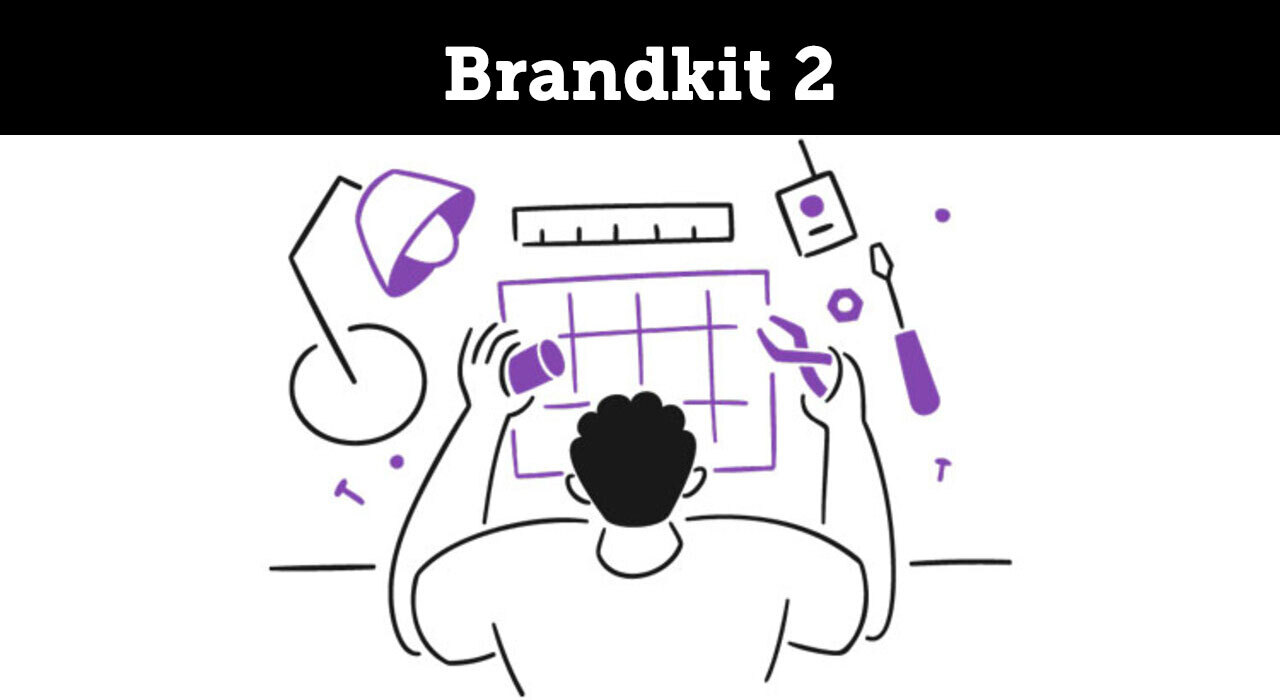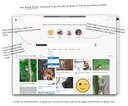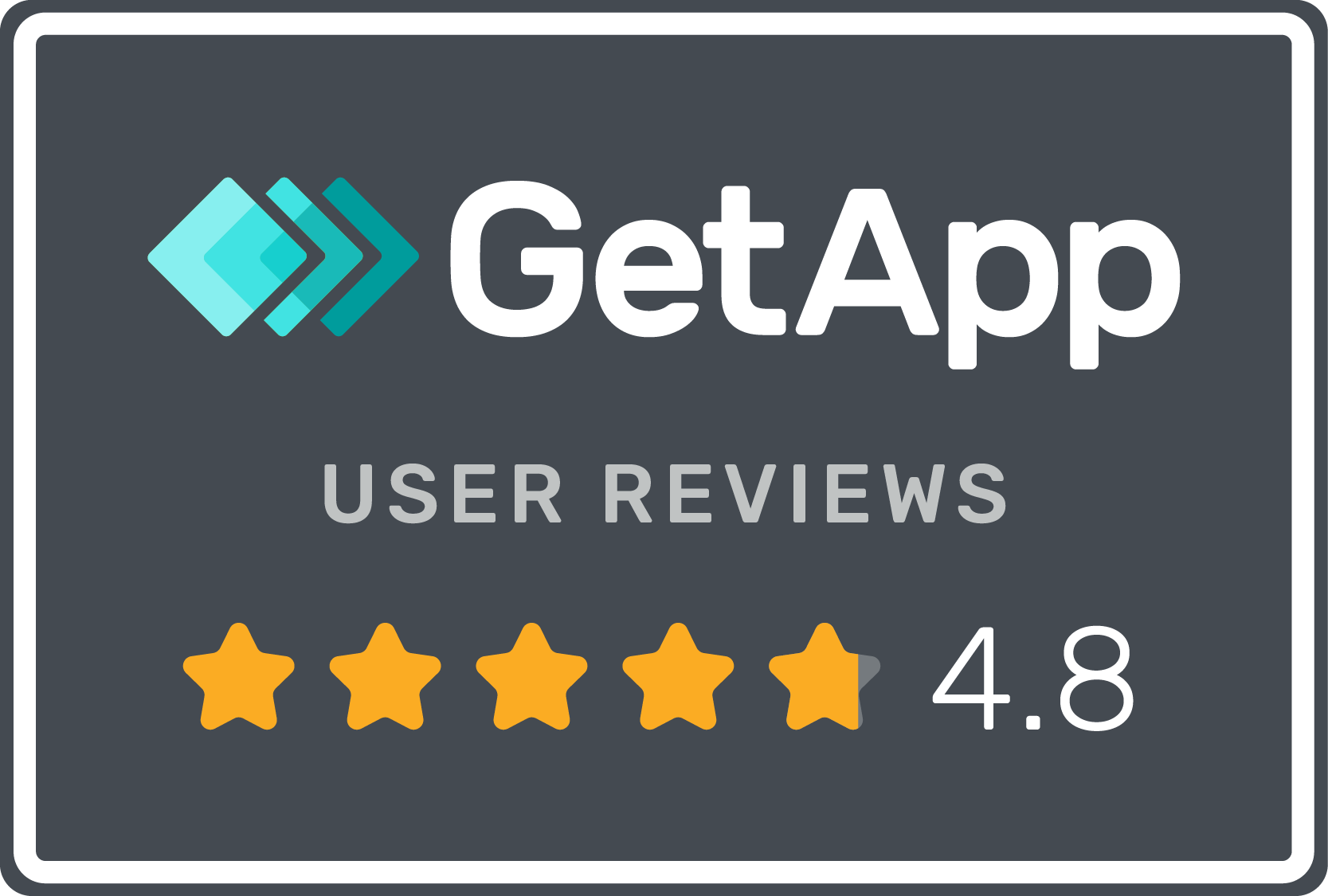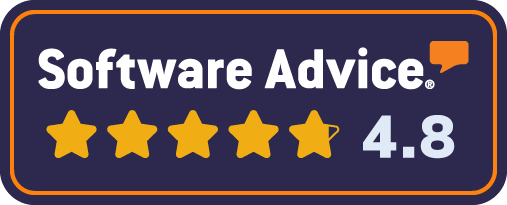
Brandkit 2
Say hello to the simpler, faster, better way to find, manage and share your content.
Introducing the new Brandkit. We went back to the drawing board, and started from scratch. We rebuilt everything from the ground up for a better, faster, cleaner experience. We can’t wait to get in your hands.
5-10x faster
Brandkit 2 has been rebuilt from scratch on a new technology stack. Page load speeds are 5 to 10x faster.
For example we tested the load speed of an Asset Detail page using Lighthouse (a Google testing tool).
We saw impressive speed improvements of 0.7sec vs 5.4s for the same page in Brandkit 1.
Simplified
We applied 7 years of learning, and removed unnecessary options, and code. We’ve managed to reduce the lines of code in our software by more than 50%. Less code means we have less bugs, more speed, more reliability, and we can add features at a faster rate.
We have also simplified the default portal design. New accounts can now get up and running, and be productive, with no customisation required.
Customisable user profile fields
Talking about simplifying.
In Bk2 you can now decide which fields appear for users when registering. Only a user’s email address is an absolute requirement.
You can also add additional registration fields to collect additional user information.
Beautified
We pared back design elements to reduce the noise. With a new minimalist UI (less is better), and a new base theme, your Brandkit portal looks better than ever - out of the box.
Everything (all content) together
“Assets” now include uploaded files, written posts, and links to external media placements. So now you can manage every type of brand content in one place. This means when you search, you’ll get a mix of all three types of content in the same search result.

Password-less login
Fed up with too many passwords. Us too!
Besides the usual login methods. We now offer a password-less login option.
To use a password-less login, enter your email address, and we’ll send you a magic-link to your in-box. Click the link and you’re logged in. Neat.
Search 2
Search now is faster, and more accurate, with improved multi-faceted search.
The new multi-faceted search enables users to be more explicit about what they want to search for. Each search term now combines two values, an attribute and a value (e.g. Orientation: Landscape).
In Brandkit 1, if you had images with a landscape orientation, and some tagged landscape. A search for landscape would return assets that are either landscape orientation, or tagged landscape . Often not what the user wanted.
In Brandkit 2, the same search would suggest a more explicit search, by suggesting two options. Orientation:Landscape or Tag:Landscape. This way the user can be more explicit about what they want.
Filters are also enhanced so that now you can widen your filter search parameters. For example you can combine filter values in a single search. Such as Type:Image,Video to search for assets that are either an image or a video.
Brand Guidelines 2
We’ve changed how you manage Brands and Brand Guidelines in Brandkit 2.
First: Now that you can build a custom brand page with the CMS, we no longer need a dedicated brand page builder. So we’ve deleted that feature. In Brandkit 2, if you still want a dedicated Brand page you can build it with the CMS (Pro and Enterprise plans)
Second: Brand Guidelines auto-attachment also sees a big change. Brand guidelines are now like all other Assets.
As an Asset, they have all the benefits of a unique asset. They are searchable, have metadata, have licence and much more. As an asset, versioning is also supported. This means there is now only a one place to update Brand Guidelines.
Attachments 2
We’ve ditched the old idea of attachments uploaded as auxiliary files to an Asset. Attachments are now Assets in their own right, and now searchable, downloadable, etc.
Now any file that you want to attach, must first be uploaded as a new Asset. You can then select that new Asset, and attach to another Asset (e.g. a Brand Guidelines PDF attached to a Logo),.
When downloading Assets, any attached Assets are automatically added to the download form.
We had Brand Guidelines in mind when redesigning the Attachments feature. But they can work with any other type of attachment too (e.g. Contracts, Talent Release, etc).
2-way Syndication
Asset Syndication sees a big update.
You can now connect to multiple 3rd-party accounts, using unique Account Connection Keys. An Account Connection Key is a unique ID, which is like an API key. Each Brandkit account has their own unique key.
Once connected, you can syndicate selected Assets to them from your Basket. The receiving account gets to curate, accept or decline the Assets received. Likewise if the 3rd party account connects back to you, they can syndicate assets to you at the same time. Likewise, you can curate, accept or reject any inbound assets.
Posts
Posts are a new Asset type. They are texts that you write in Brandkit.
Think articles, press releases, blog posts, approved brand copy, story ideas. You write, edit, share, and even download (as .html files) using a Post editor in Brandkit. What’s more, you can embed images inside your new text assets, with a simple Asset select.
While Posts existed in Brandkit 1, in Brandkit 2 they as Assets. They now appear in search results together with file based assets, and links.
Vaults
We’re introducung Vaults. Vaults are like folders. An asset can only belong to one Vault (An Asset can appear in multiple collections or albums).
We now use Vaults to control access to Assets versus Licence’s in Brandkit 1.
It’s now possible to configure a single User Role with download right for one Vault, and request rights for another Vault. This wasn’t possible in Brandkit 1, where it was either one or the other per role.
Licences are now dedicated to describing the licence requirements only.
User Role Groups
You can now create groups of User Roles to make personalizing your Brand Portal pages easier.
This is useful when you have a lot of custom User Roles.
e.g. you could create a User Role Group called “Insiders” made up of the roles, “Admin”, “Marketing”, and “Staff”. Then in your portal you could add a page or section that was only visible to the “Insiders” User Role Group.
CMS Access (Pro and Enterprise plans)
Customers on Pro and Enterprise Plans now have direct access to the CMS.
This means you, or someone in your team, can now create, manage and edit Portal pages using an HTML editor. Or you could engage an outside web designer, or continue to have the Brandkit team edit your pages.
Design Themes (Pro and Enterprise plans)
Customers on Pro and Enterprise Plans now have direct access to the design themes.
We have a new theme system. Customers now have direct control over branding, page layouts, CSS, Fonts and colours. You can choose one of our standard themes, or develop your own, or even multiple themes if you so desire.
Role Masquerading
Customisable User Roles is great, but things can get complex if you have a lot of different User Roles. Even more so when you personalise what each User Role can see, whether that’s a set of Assets, or a section on a portal page.
Role Masquerading makes it much easier to check what’s visible for each user Role. You can now see what they see. Giving you confidence in your configurations.
As a bonus you can check out how different themes look at the same time.
Multiple Portals (Enterprise Plans)
New in Brandkit 2 is the ability to create multiple portals from a single Brandkit account.
The idea here is that you can serve a Portal suited to each of your audiences, based on the same central pool of Assets. This makes perfect sense, when you realise that many Assets are exactly the same across different audiences.
So for example you could have a trade focused portal at trade.yourbrand.com. A media focused portal at media.yourbrand.com. A customer focused portal at content.brand.com, etc.
Each portal has a unique URL and can have a unique design.
Filters 2
Brandkit now gives customers direct access to create and edit Search Filters.
A new custom filter editor means customers can create and edit as many filters as they need. Creating Filters also now generates a Tag.
If you also have CMS access, you can also add or remove Filters to pages, and/or change their sort order.
Embeds 2
Embeds now provide several size options, and responsive code for image embeds.
Embedded assets will now also support view tracking, to provide improved usage reporting.
The way this works. Every time an embedded Asset is viewed, whether from the Brand Portal, or when embedded in a 3rd party website, Brandkit will report view counts.
B2C friendly
Brandkit has focused on serving B2B or Trade users, but there’s no technical reason why we shouldn’t also support B2C.
Two new view options (Masonry Grid and Timeline) and the ability to allow the public to see assets without having download or request rights*,
This means that you can now setup your Portal to suit public consumption for public users.
Call-to-Action 2
Alongside improvements aimed at B2C, we’ve updated CTA options.
You can now use CTA links to drive B2C (or B2B) conversions (e.g Link an asset to your booking or e-commerce page).
Brand Portal Web Analytics
We have partnered with Plausible Analytics , to bring you web analytics built into your Brandkit.
Plausible is a small privacy first analytics tool based in Europe.
There’s a new analytics dashboard for your Brand Portal. For each of your portals in a multi-portal account.
You get the usual web analytics data collected over time, in a gorgeous looking dashboard.
Analytics include:
- visitors,
- visitor sources,
- browsing technology used,
- pages visited,
- entry and exit pages,
- top pages,
- and more.,
If you still want Google Analytics, it’s remains possible to configure that as well.
Credits 2
Giving credit or attribution to a photographer, author, creator or partner was a bit loosey goosey.
In Brandkit 2 we’ve tightened things up and made Credits more powerful and useful.
Credits are now a database of people or organisation you want to credit. These might include photographers, talent, authors, vendors, or partners. Each Credit now has a profile with contact details, a bio (including web links), and an avatar. They also get a dedicated search page, containing any Assets credited to them.
When you publish an Asset requiring attribution, you now select a Credit in the database, from a pick list. This automatically wires up the Asset to the Credit, an the Credit’s search page.
You can also add a grid Credits to portal pages. It’s a great way to create a contact page for your partners, to give those folks some extra appreciation and SEO juice.
Asset Insights
We now track views of Assets from the Brand Portal, and from Assets embedded in 3rd party web pages. This means it’s now possible to track how often images are viewed across the web. Provided they are embedded using the Brandkit embed code.
We also show the URL of the requesting site - so you can now get a better sense of where your Asset are being used.
New Timeline view
There’s now a full audit trail for each Asset and User on a new chronological timeline design.
Public Uploads 2 (Now called Contributions)
We’ve redesigned the Public Upload work-flow and renamed it Contributions.
Contributions now has a separate Terms of Contribution agreement (that can be customised), a simplified uploading process and a new quarantine area for contributions for Admins to review and accept or decline a contributed file.
API 2
We have a new API available in Beta.
For example we’re integrating via Zapier.com and pushing user registration to CRM’s and Email marketing tools.
Feedback 2
In Brandkit 1 we had a built-in NPS/Feedback survey that fired after downloads. The survey had a configurable wait period (e.g. 90 days) before it runs again for each user.
We were going to drop this feature in favour of customers using a 3rd party survey tool (e.g. Delighted, AskNicely, etc).
However some customers have told us they really love the feature and the feedback loop is crritcal for them and the feedback received has been invaluable in helping them make content investment decisions.
So we’re bringing it back.
Feedback will be a little simpler and less invasive to the user experience. Instead of a pop up modal after download, we’re just going to present the option to provide feedback in a more subtle way.
Two-factor authentication
We now support 2-factor authentication via 3rd party SSO, but also now have our own two-factor authentication solution built in to Brandkit 2.
Coming later
Here’s what’s in the development queue, coming as soon as we can get to it.
Metadata Read/Write
Metadata should be system agnostic, and travel with the file as it moves between systems. This has been a goal of Brandkit 2 from the get go - but has had to take a back seat to other priorities for now.
Brandkit 2 will be able to extract IPTC/EXIF and XMP metadata from a file on ingestion. Write that to the Asset’s metadata in Brandkit. Then write metadata from Brandkit, to a Brandkit XMP record in the downloaded file.
Social Media publishing
We’ll be adding social media publishing in the Sharing dialogue in Brandkit 2. Like you see when sharing a Youtube video.
Auto GEO tagging 2
Available in Bk1, coming to Bk2 a little later.
Auto GEO tagging extracts GPS coordinates from uploaded images with GPS coordinates. It then use the Google Maps API to match images to location data. Then adds those location tags to the image’s Asset metadata. We then plot those assets on a map view using Google Maps.
Native 3rd party Integrations
We’ve already built native ingestion tools for Google Drive, and Instagram. However, a late change in how we upload files means we’re going to rethink those integrations, and will add them again later.
E-sign integration for public upload
We’re looking to allow 3rd party contract s (e.g.using Docusign™, and others) to be used instead of our built in Contribution Terms, in the Contribution workflow.
Integration with 3rd party UGC providers
We’re working with UGC software vendors, to make it easier for customers to work with social media content such as images from Instagram.
Commenting 2
Upgrades to commenting for Admins to enhance collaboration around content, including @mention capability.
Whats gone or going
No more HTML emails - going green
We’re removing HTML email as an option, in favour of plain text emails.
Why? Three primary reasons:
- Performance: Research tells us that plain text email performs better than HTML. With higher delivery rates, higher open rates and higher conversion rates.
- Environmental impact: Plain text email messages are much smaller, and use much less energy. Saving precious CO2 emissions.
- Simplification: Email was not designed for HTML. An email message was never meant to be a web page. HTML email is a hack. Plain text requires no customisation or branding, other than an email signature. This means less code, less configuration and less custom design. Fewer problems.
We even add this message on every email send by the Brandkit system:
“p.s. We send plain text emails to save CO2. Next time you send an email, please consider sending in plain-text. You’ll get better delivery, open and conversion rates. Plus you’ll also consume less energy, and produce less CO2. We all win.”
Of course you can still send your own HTML emails via your usual Email Marketing tools and apps.
No more Brands settings page
In Brandkit 1, you could setup a dedicated page for Brand Guidelines download in settings.
With direct CMS access, and the new Attachments feature, this is no longer needed.
If you multiple brands, you can setup a Custom Filter for your Brand’s. Then tag assets with the right Brand.
It’s now much clearer and simpler in Brandkit 2.
No more separate FAQs database
Now that you can create a custom page, you can write up your FAQs anyway you want.
Link to your FAQs page from anywhere using standard web links. You can even use search-able Posts as FAQs . Which is how we are planning to add FAQs in our own Brand Portal.
More to follow
Like all good cloud software, there is never an end to development. Things change, new things drop all the time and are likely to continue to do so for the foreseeable future.
We we don’t like making promises we can’t deliver - so we’re not putting a date on things. We’ll keep you posted, of what’s here, what’s next . But only when were confident we can deliver said feature soon.
Happy branding :)
~ end~
Brandkit 2: What's new in 2
Brandkit 2 is about to launch. here we summarise all the new features and smoothers coming a little later.


